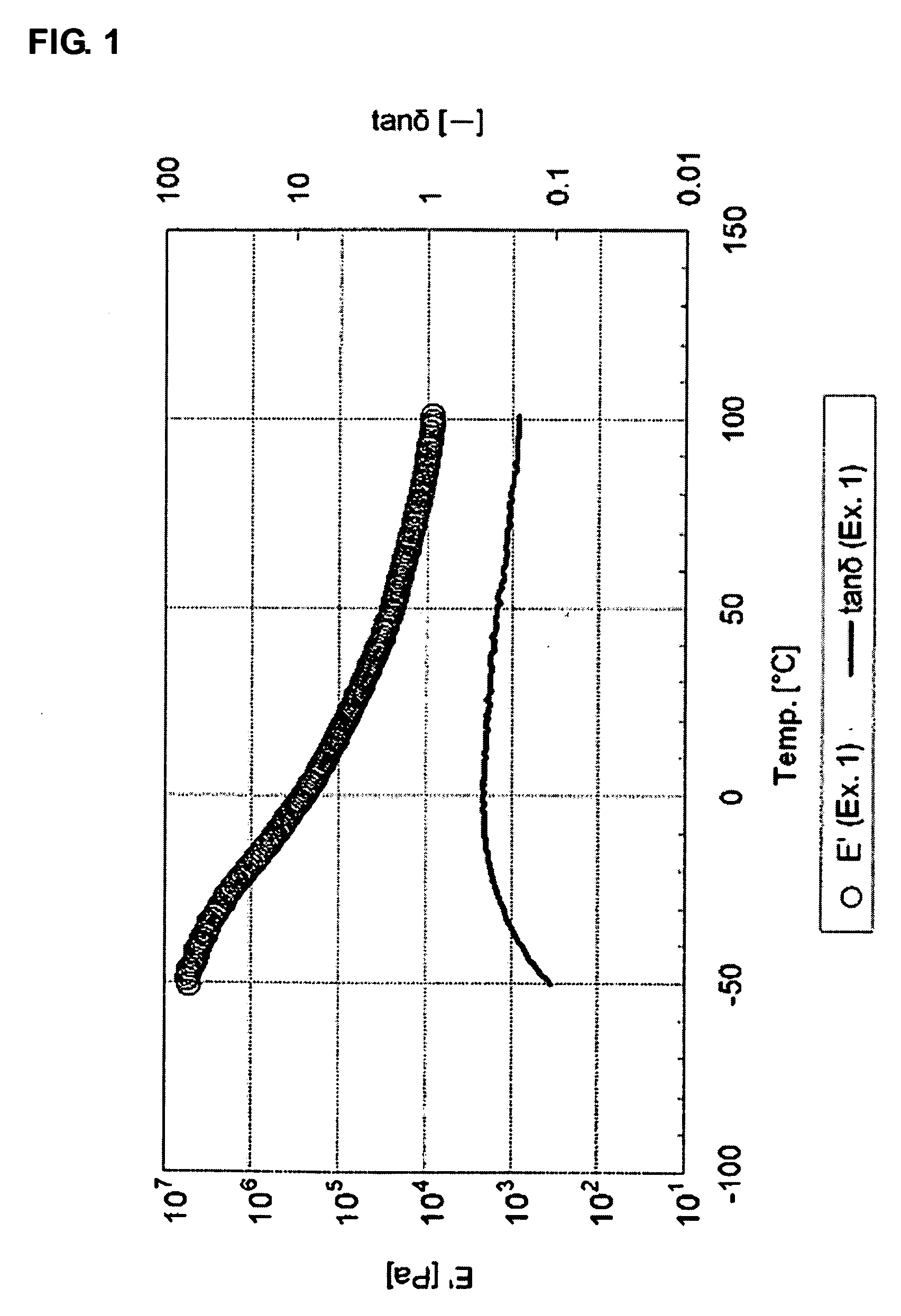Composition for Polyurethane Foam, Polyurethane Foam Obtained From the Composition, and Use Thereof
a technology of polyurethane foam and composition, applied in the field of polyurethane foam composition, can solve the problems of not being able to provide a plant-derived unable to provide a polyurethane foam having low rebound property, and significantly increasing hardness of polyurethane foam at low temperatures. , to achieve the effect of reducing fatigue and a bedsore, excellent low rebound property, and suppressing the increase in hardness at low
- Summary
- Abstract
- Description
- Claims
- Application Information
AI Technical Summary
Benefits of technology
Problems solved by technology
Method used
Image
Examples
synthesis example 1
[0124]A reactor equipped with a stirrer, a thermometer, a nitrogen inlet tube and a reflux condenser was charged with 1192 g (4 mol) of a castor oil fatty acid having an acid value of 188 mgKOH / g and 1200 g (4 mol) of a hydrogenated castor oil fatty acid having an acid value of 187 mgKOH / g as hydroxycarboxylic acids having more than 15 carbon atoms and OH group. The condensation reaction was performed under a nitrogen atmosphere at a temperature range of 180 to 230° C. for 2 hr, during which the water generated was distilled off from the system, to obtain an oxycarboxylic acid oligomer having an acid value of 70 mgKOH / g. This oxycarboxylic acid oligomer corresponded to a 2.7-mer of an equimolar mixture of the castor oil fatty acid and the hydrogenated castor oil fatty acid.
[0125]Subsequently, to the above reactor were added 92 g (1 mol) of glycerin as a polyhydric alcohol and 2.6 g (0.01 mol) of titanium lactate [(HO)2Ti(C3H5O3)2] as a catalyst. The condensation reaction was perform...
synthesis example 2
[0126]To 1 mol (2340 g) of plant-derived polyol (B5-1), which was obtained in Synthesis Example 1 and had a hydroxyl value of 60 mgKOH / g, was added 0.01 mol (7.6 g) of tetrakis[tris(dimethylamino)phosphoranylidenamino] phosphonium hydroxide, and the mixture was dehydrated under reduced pressure at 100° C. for 6 hr. Thereafter, addition polymerization with propylene oxide was carried out at a reaction temperature of 80° C. under the maximum reaction pressure of 3.8 kg / cm2, and then addition polymerization with ethylene oxide was carried out at a reaction temperature of 100° C. under the maximum reaction pressure of 3.8 kg / cm2 to obtain plant-derived polyol (B6-1). The polyol (B6-1) had eight side chains represented by C6H13 (hexyl group), a hydroxyl value of 49 mgKOH / g an average number of functional groups of 2.5 and a terminal oxyethylene group content of 15% by mass.
synthesis example 3
[0127]To 1 mol (2340 g) of plant-derived polyol (B5-1), which was obtained in Synthesis Example 1 and had a hydroxyl value of 60 mgKOH / g, were added 4.6 mol (525 g) of ε-caprolactone and mol (8.1 g) of tin octanoate. The ring-opening polymerization was performed at 140° C. for 2 hr to obtain plant-derived polyol (B7-1), which had eight side chains represented by C6H13 (hexyl group), a hydroxyl value of 49 mgKOH / g and an average number of functional groups of 2.5.
PUM
| Property | Measurement | Unit |
|---|---|---|
| hydroxyl value | aaaaa | aaaaa |
| hydroxyl value | aaaaa | aaaaa |
| hydroxyl value | aaaaa | aaaaa |
Abstract
Description
Claims
Application Information
 Login to View More
Login to View More - R&D
- Intellectual Property
- Life Sciences
- Materials
- Tech Scout
- Unparalleled Data Quality
- Higher Quality Content
- 60% Fewer Hallucinations
Browse by: Latest US Patents, China's latest patents, Technical Efficacy Thesaurus, Application Domain, Technology Topic, Popular Technical Reports.
© 2025 PatSnap. All rights reserved.Legal|Privacy policy|Modern Slavery Act Transparency Statement|Sitemap|About US| Contact US: help@patsnap.com



